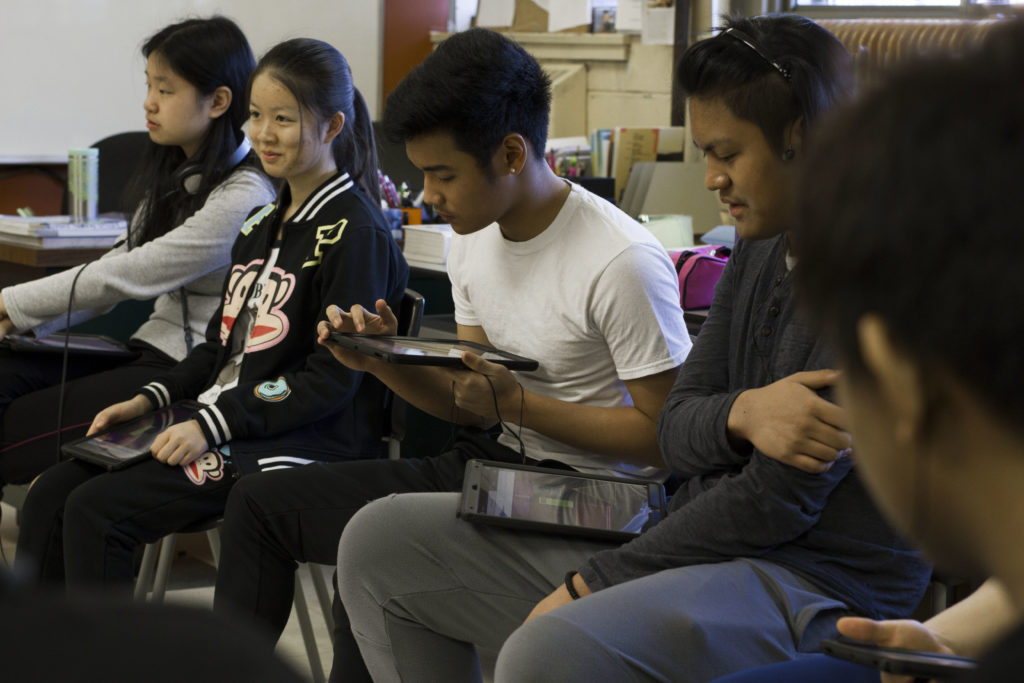Turnkey workshops
Fonofone in your classroom
Thanks to the “Culture à l’école” program, schools are eligible to host one of our turn-key creation workshops. The length and frequency of these workshops are adjusted to your needs.
We arrive with all the necessary equipment. If you already use iPad, you can purchase and install the fonofone app ahead of time, by using Apple’s Volume Purchase Program (VPP).
The goal of the workshop is to collectively compose and perform a piece where everyone contributes their own ideas. The context however, is flexible: it can be the creation of a single work (possibly performed in front of the whole school), sound/music for a theatre piece, sound-poetry (a piece composed uniquely with words or a poem within an English class or second-language class), etc. The possibilities are limitless!
Unfolding of a typical workshop (1:00-1:30)
- Brief introduction to the workshop-leader and the fonofone application
- Individual exploratory session using headphones (so the classroom is silent!)
- The workshop-leader questions the students about their discoveries: for example, “who can tell me what the yellow triangle is used for?” This is the perfect time to find the words necessary that will better describe what the students discovered intuitively and to improve their aural perception.
- The workshop-leader suggests a few games that help refine the students’ listening skills and their understanding of sound.
- At this stage, the collective composition process can be initiated. Different strategies can be taken, much depending on the group dynamic. The workshop-leader’s role becomes more one of drawing out ideas from members and clarifying them with the group.
- As soon as an engaging idea emerges, it is tested immediately in the form of a game. Then, a period of evaluation before starting another period of searching and development.
- Once the global idea of the piece has been determined, we switch to performance-mode, where the focus becomes how to faithfully execute the unfolding of events as decided by the group, and in response to the direction of the conductor.
- Assessment of the performance:
- comments
- Were the directions of the conductor respected?
- Are there improvements to be made with respect to the form of the piece or its performance? - After hearing all comments, the piece is performed again.









